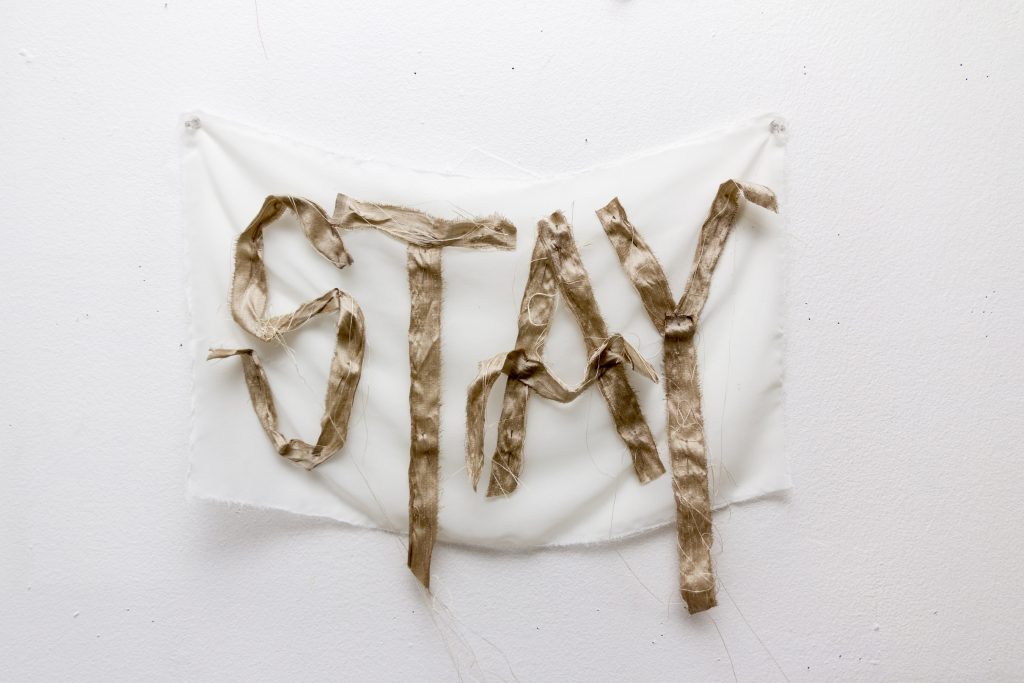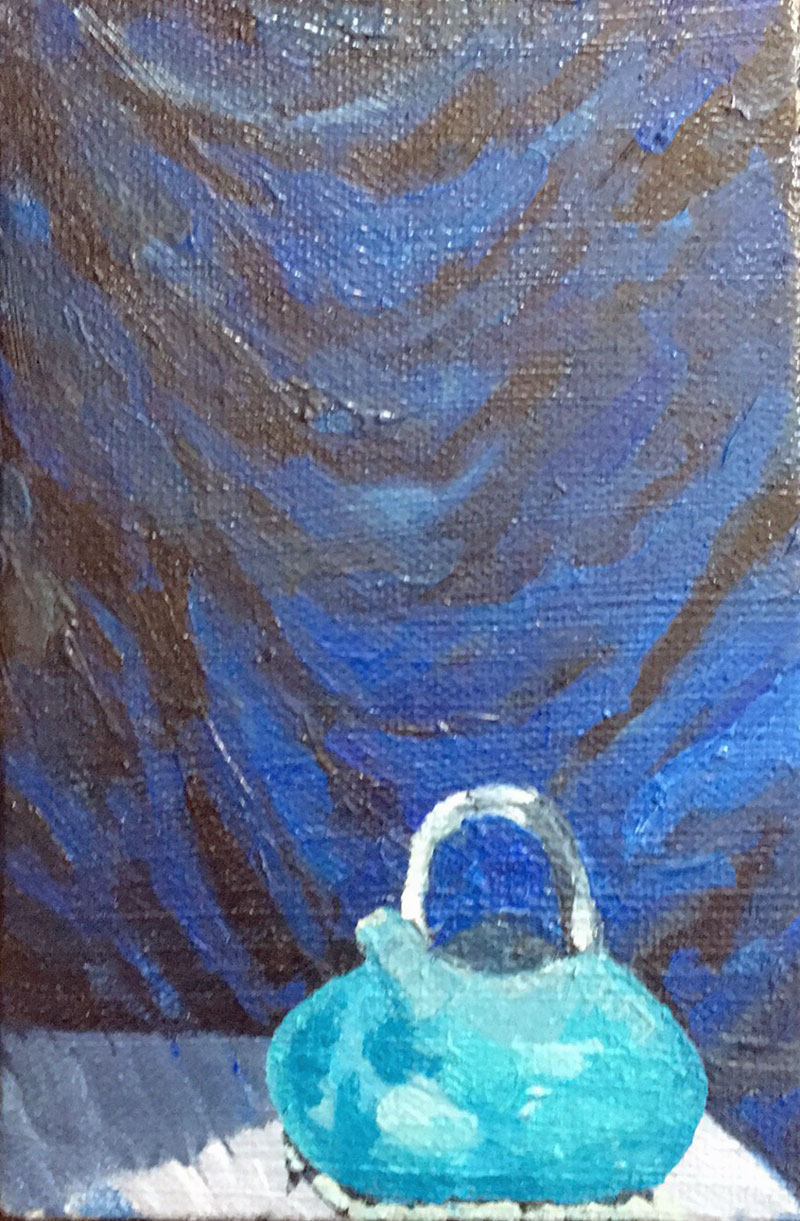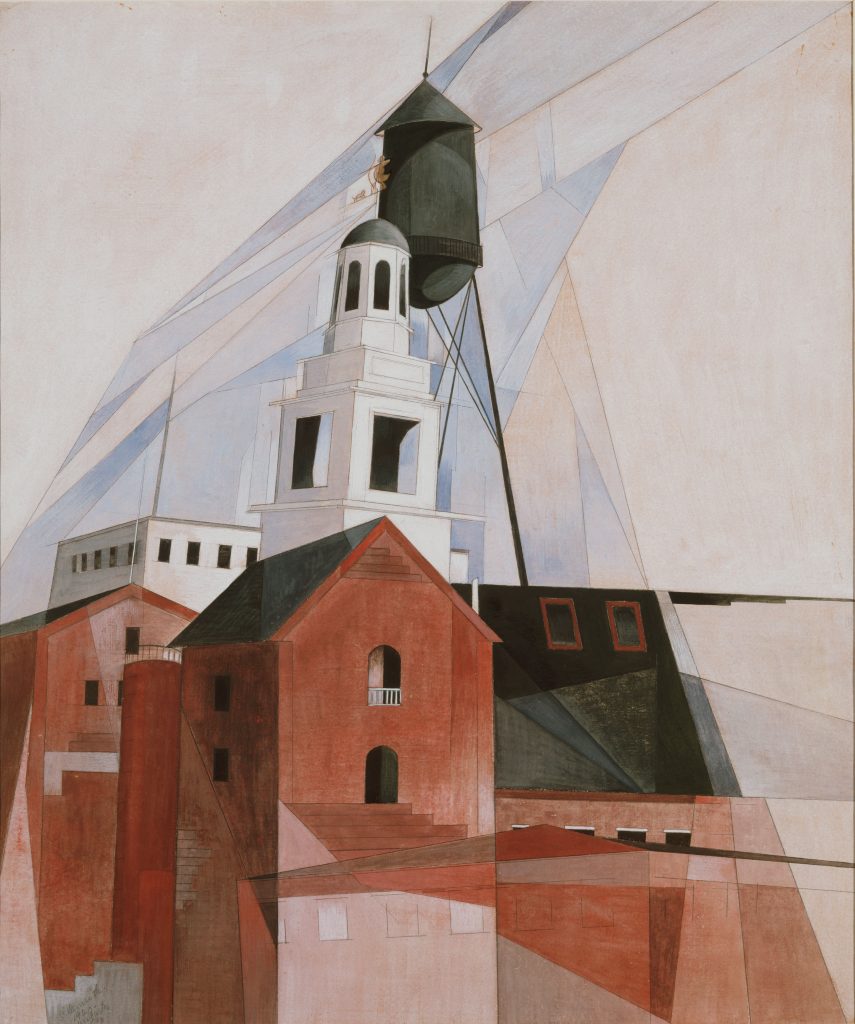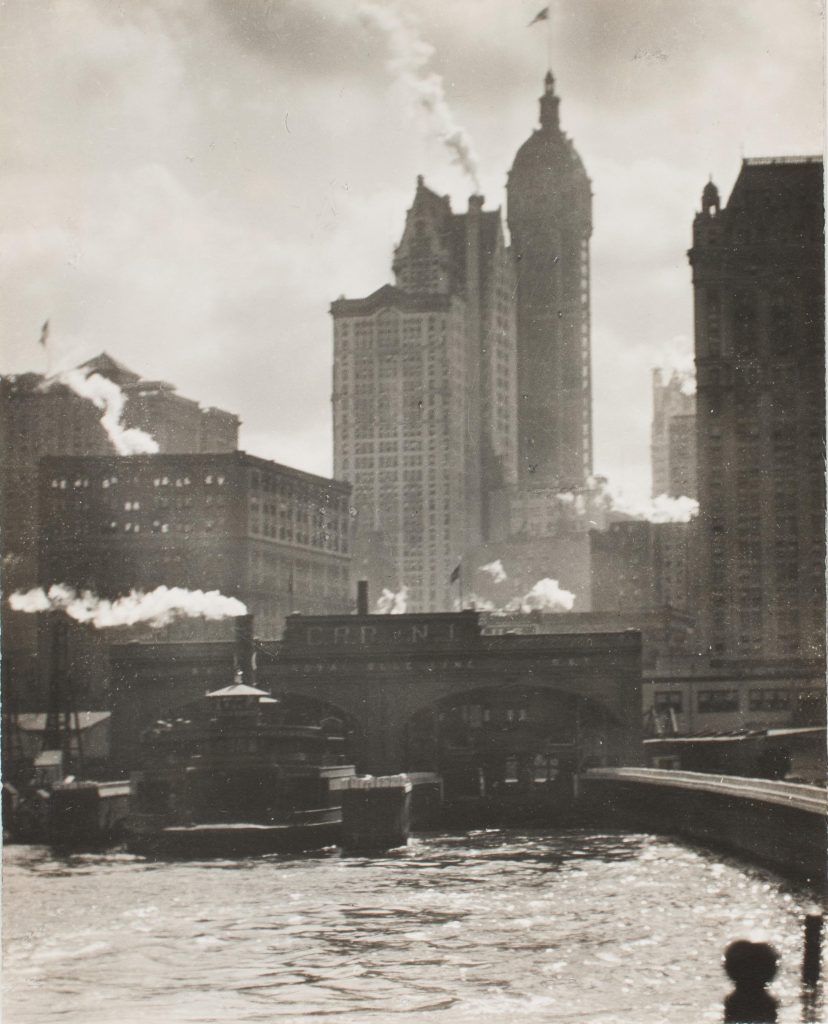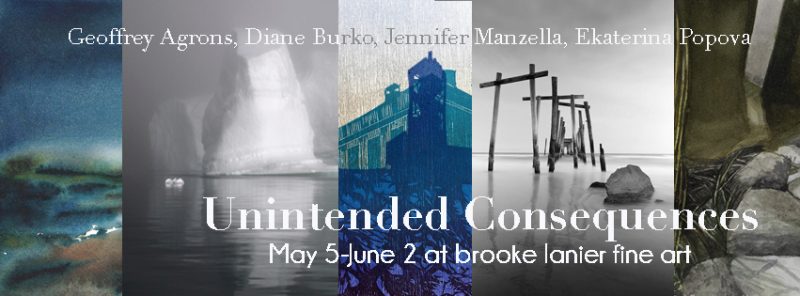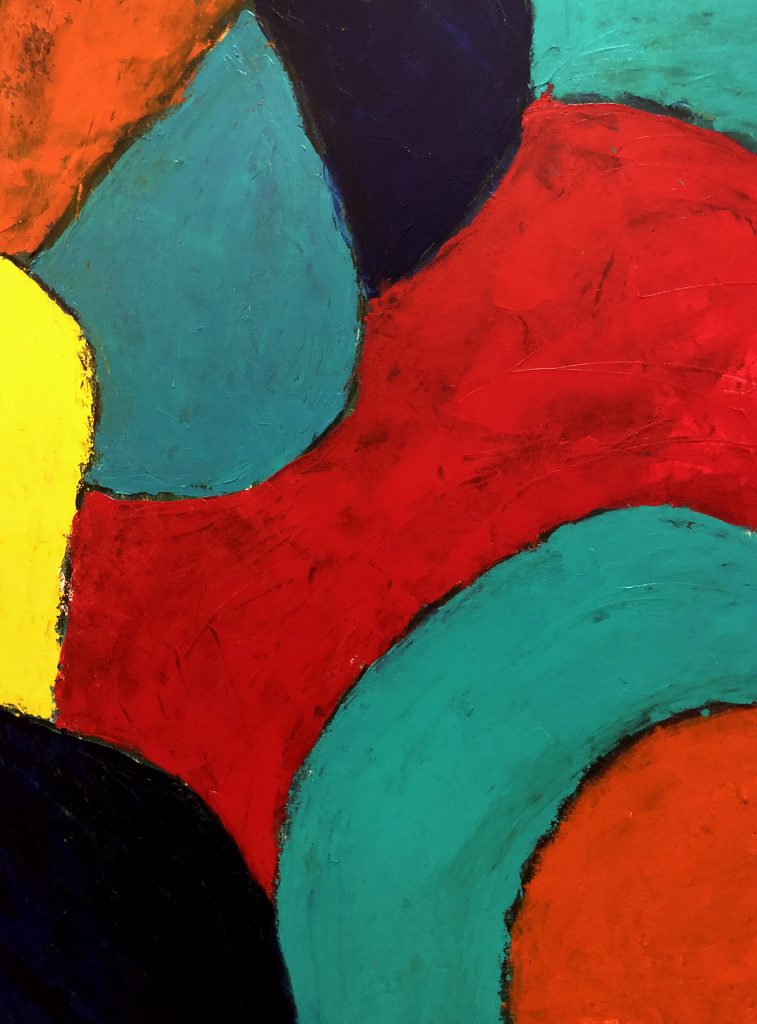 Zelda Edelson, Calif’s Palace, acrylic on canvas, 40” x 30”, 2018
Zelda Edelson, Calif’s Palace, acrylic on canvas, 40” x 30”, 2018
Accomplished painter and editor from Philadelphia has first solo exhibition at
age eighty-nine in her hometown.
Zelda Edelson: Color in the Moment
A solo exhibition by painter Zelda Edelson
November 2 – 30, 2018
Curated by Amie Potsic
OPENING RECEPTION: First Friday, November 2, 5:00 – 9:00 PM Artist in attendance at 5:00 PM
LOCATION: Old City Jewish Art Center (OCJAC), 119 N. 3rd Street, Philadelphia, PA 19106
Contact: Rabbi Zalman Wircberg, 215-627-2792 ocjac.org
HOURS: Thursdays and Fridays 11:00 AM – 4:00 PM, Sundays 12:00 PM – 4:00 PM and by appointment (Closed on Thanksgiving).
Admission is free.
Click the pics for large images.
Philadelphia, PA – Old City Jewish Art Center, located at 119 N. 3rd Street, Philadelphia, and Amie Potsic Art Advisory, LLC present Color in the Moment, a solo exhibition by painter and Philadelphia native, Zelda Edelson. At eighty-nine years old, Edelson presents her first solo show in the city, which highlights her new paintings. Curated by Amie Potsic, CEO and Principal Curator of Amie Potsic Art Advisory, LLC, the show begins on November 2 and runs through November 30. The opening reception will be on First Friday, November 2 from 5:00 – 9:00 PM with the artist in attendance at 5:00 PM to discuss her work with guests and patrons. Gallery hours are Thursdays and Fridays from 11:00 AM – 4:00 PM, Sundays from 12:00 PM – 4:00 PM, and by appointment. Admission is free and all are welcome.
Color in the Moment features Zelda Edelson, a prolific abstract painter who has created her own technique to enable her to paint from a walker used for balance. Creating something positive from challenging circumstances, her paintings are colorful and evocative. Edelson begins each painting with a gesture of the arm to create the first mark with her palette knife. The paint begins to flow and Edelson becomes invigorated, losing herself in the process. She paints on the areas of the canvas she can reach first. Then turning the painting, she accesses the previously unreachable portions to complete it. When each painting is finished, Edelson enjoys the process of bringing her diverse background to bear as she writes insightful titles for each work. Sharing her love of painting through gesture, color, and form, Edelson’s work reveals a voice that is both seasoned and spontaneous.
Edelson explains, “My paintings are full of color, feeling, and movement. They are lyrical like a song, strong like a knot, and intricate like a spider’s web.” Her work is in the tradition of Abstract Expressionism as were her strongest influences: artists Paul Klee, Jackson Pollock, and Willem de Kooning.
 Zelda Edelson, Interrupted, acrylic on canvas, 40” x 30”, 2018
Zelda Edelson, Interrupted, acrylic on canvas, 40” x 30”, 2018
Zelda Toll Edelson was born in Philadelphia on October 18, 1929. Edelson traces her interest in art and painting to an experimental art class she took while at Girls High taught by distinguished artist and teacher Jack Bookbinder. This first introduction to modern art had a profound effect on her, which she would act on many years later. As a young woman, Edelson was a bit of a radical, frequently going to far away parts of town to see a foreign movie or check out a bookstore. When she completed high school, she went to the University of Chicago, where she graduated with a major in English Literature. After marrying Marshall Edelson, she eventually moved to Connecticut. There she began her twenty-year career as Editor and Head of Publications for Yale University’s Peabody Museum of Natural History. In her role as editor, Edelson used her artistic sensibility to create skillfully produced photographs and illustrations to complement the natural history articles of the Yale faculty.
When she retired in 1995, Edelson decided to focus on painting. She also moved back to Philadelphia, to her roots, where she still has many family members. Zelda has exhibited her work at the Woodbridge Town Center and the Creative Arts Center in Connecticut as well as at Gallery Q2, The Jewel of India, Art for the Cash Poor, and Main Line Art Center in the Philadelphia area. She received an Honorable Mention award in the 70th Annual Members’ Exhibition at Main Line Art Center in October of 2007. At eighty-nine years old, Edelson now lives in Haverford, PA, where she continues to be a prolific painter.
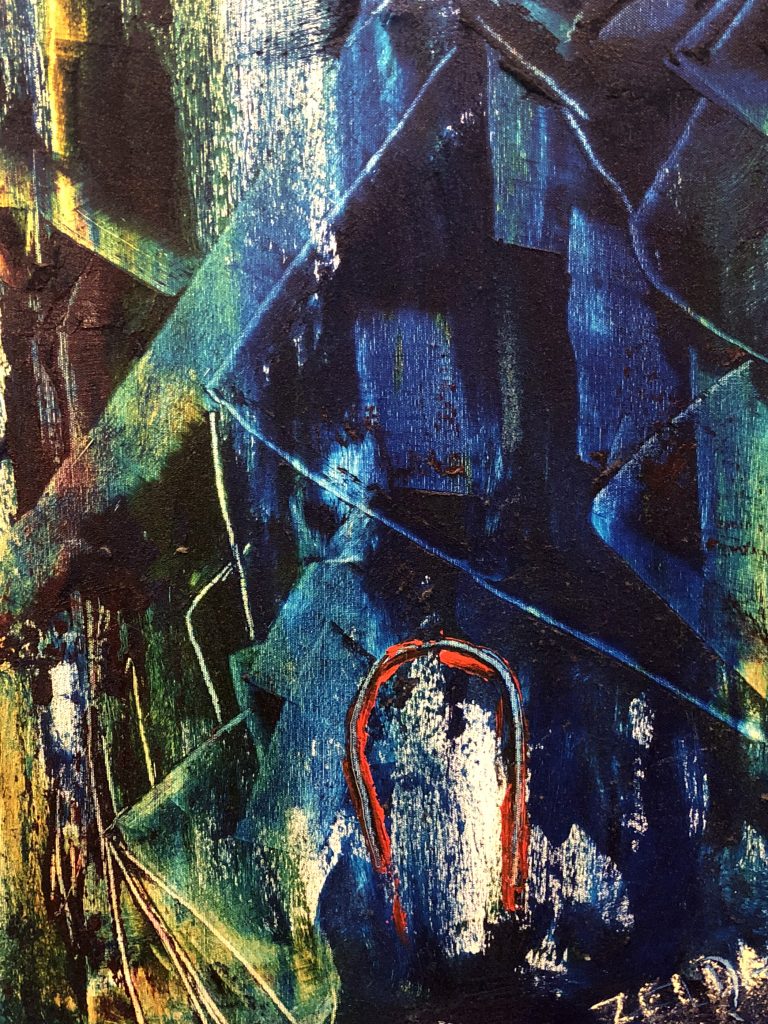 Zelda Edelson, Romance In A Winter Light, acrylic on canvas, 24” x 18”, 2012
Zelda Edelson, Romance In A Winter Light, acrylic on canvas, 24” x 18”, 2012
Curator of the exhibition, Amie Potsic, MFA is the CEO & Principal Curator of Amie Potsic Art Advisory LLC, Chair of the Art In City Hall Artistic Advisory Board of the City of Philadelphia, as well as an established photographer and installation artist. Potsic has extensive experience curating exhibitions for museums, galleries, art organizations, and public spaces and offers Legacy Planning for artists and collectors. Legacy Planning involves the opportunity to shape an artist or collector’s legacy, during their lifetime, to create meaning and purpose through a life’s work. By documenting, exhibiting, and publishing their artwork as well as placing works with institutions and collections, she helps strengthen their artistic impact while relieving their loved ones of the difficult task of organizing an archive, studio, or collection. Potsic presents this legacy exhibition to honor Edelson and her work.
Potsic received her MFA in Photography from the San Francisco Art Institute and BA’s in Photojournalism and English Literature from Indiana University. She has held faculty appointments at the University of California at Berkeley, Ohlone College, and the San Francisco Art Institute and been a guest lecturer at the International Center of Photography, the University of the Arts, Tyler School of Art, and the Delaware Contemporary. Professional appointments have included Director of Gallery 339, Curator and Director of the Career Development Program at the Center for Emerging Visual Artists (CFEVA), and most recently Executive Director and Chief Curator of Main Line Art Center. Curatorial projects have included exhibitions for the Philadelphia International Festival of the Arts, the Office of Arts and Culture of the City of Philadelphia, Philagrafika, Moore College of Art & Design, Main Line Art Center, Maryland Art Place, Pittsburgh Center for the Arts, and the Philadelphia Museum of Art.
Founded in 2006, the Old City Jewish Art Center (OCJAC) was envisioned as a platform to build Jewish community through the arts. Growing steadily since then, the OCJAC gallery has become an exhibition space for serious artists, holds monthly First Friday art receptions with a Jewish twist and provides social and Jewish holiday programs throughout the year. OCJAC is now a landmark gallery in the Philadelphia art scene and is the only gallery dedicated to Jewish artistic expression and cultural exchange in Philadelphia. Using the arts as a springboard, the Old City Jewish Art Center advances and promotes the universal messages of Judaism and spiritually to the broadest possible audience.
Color in the Moment will be on view November 2 – 30, 2018. The opening reception will be on First Friday, November 2 from 5:00 – 9:00 PM. Gallery hours are Thursdays and Fridays from 11:00am – 4:00pm, Sundays from 12:00 PM – 4:00 PM, and by appointment. Admission is free and all are welcome.
For more information, please contact Amie Potsic at amie@amiepotsicartadvisory.com or 610-731-6312.
Thank you to Amie Potsic for the content of this post.
Old City Jewish Art Center, 119 N 3rd Street, Philadelphia, PA 19106
Like DoNArTNeWs Philadelphia Art News Blog on facebook
Follow the new DoNArTNeWs.com
Follow DoN on Twitter @DoNNieBeat58
@donniebeat on Instagram
Affiliate Marketing [disclosure page] Shop on-line and help support DoNArTNeWs
Donate via safe and secure PayPal in the sidebar.
DoNArTNeWs – celebrating ten years reporting on Philadelphia artists and art.





